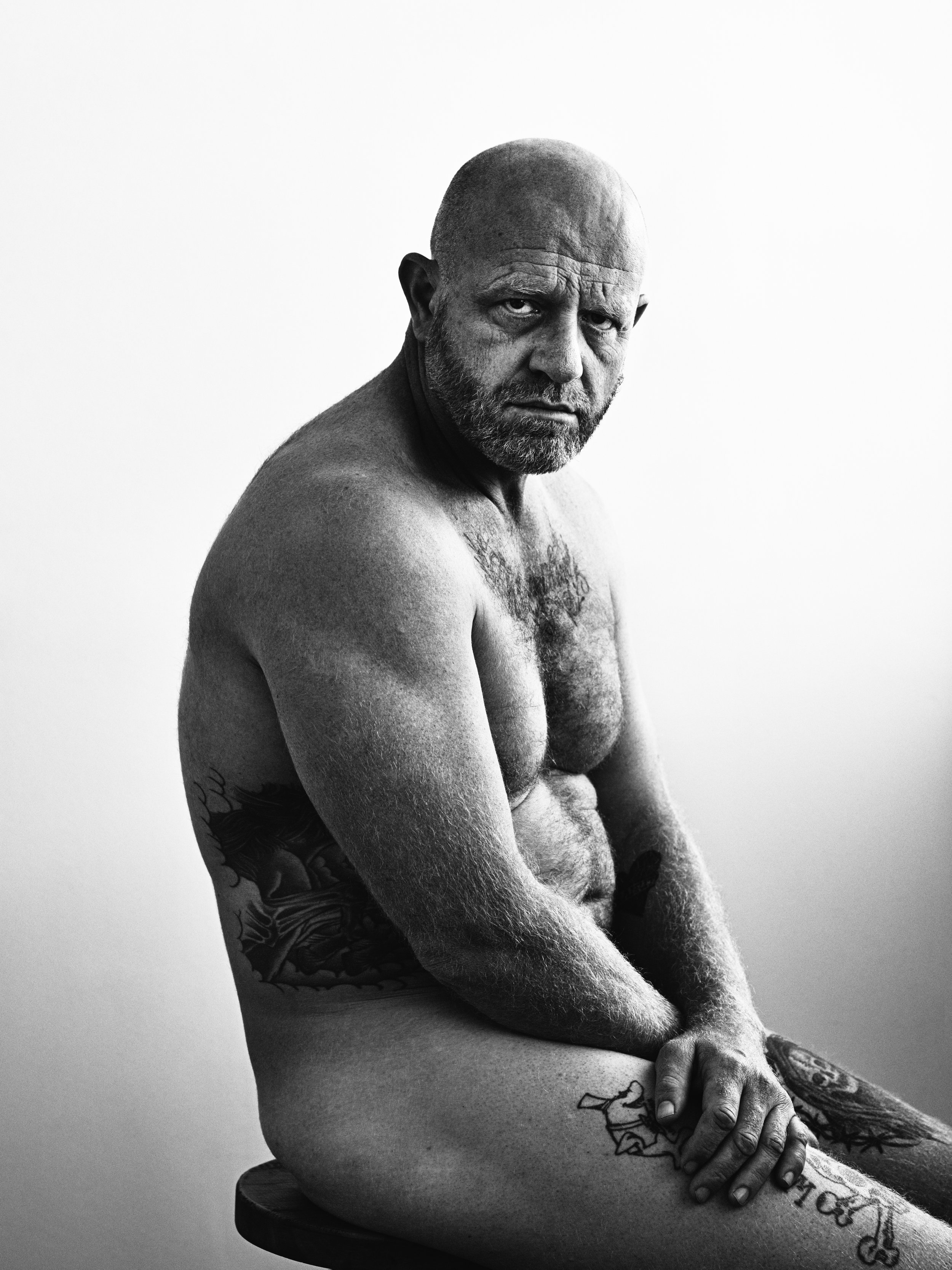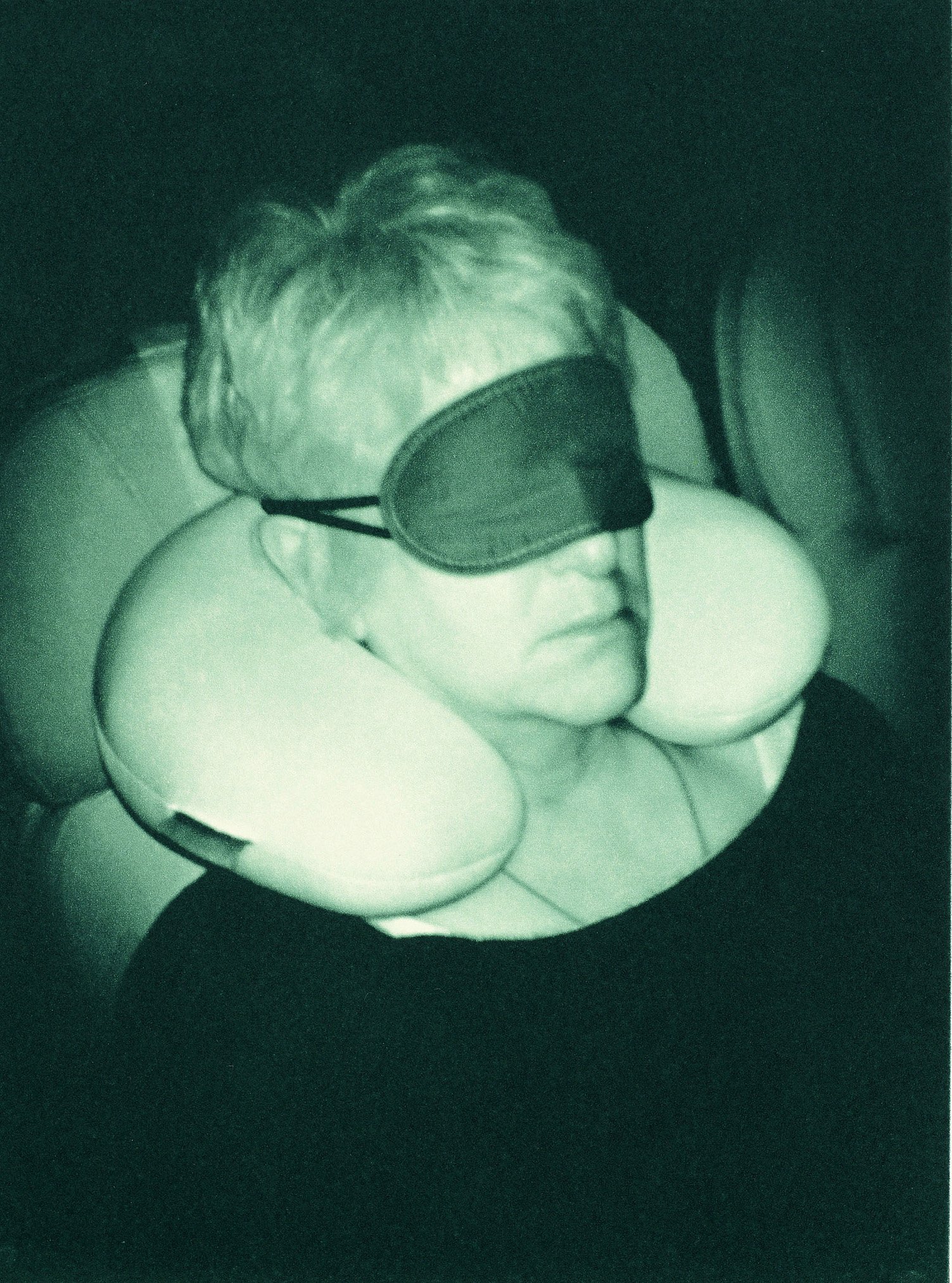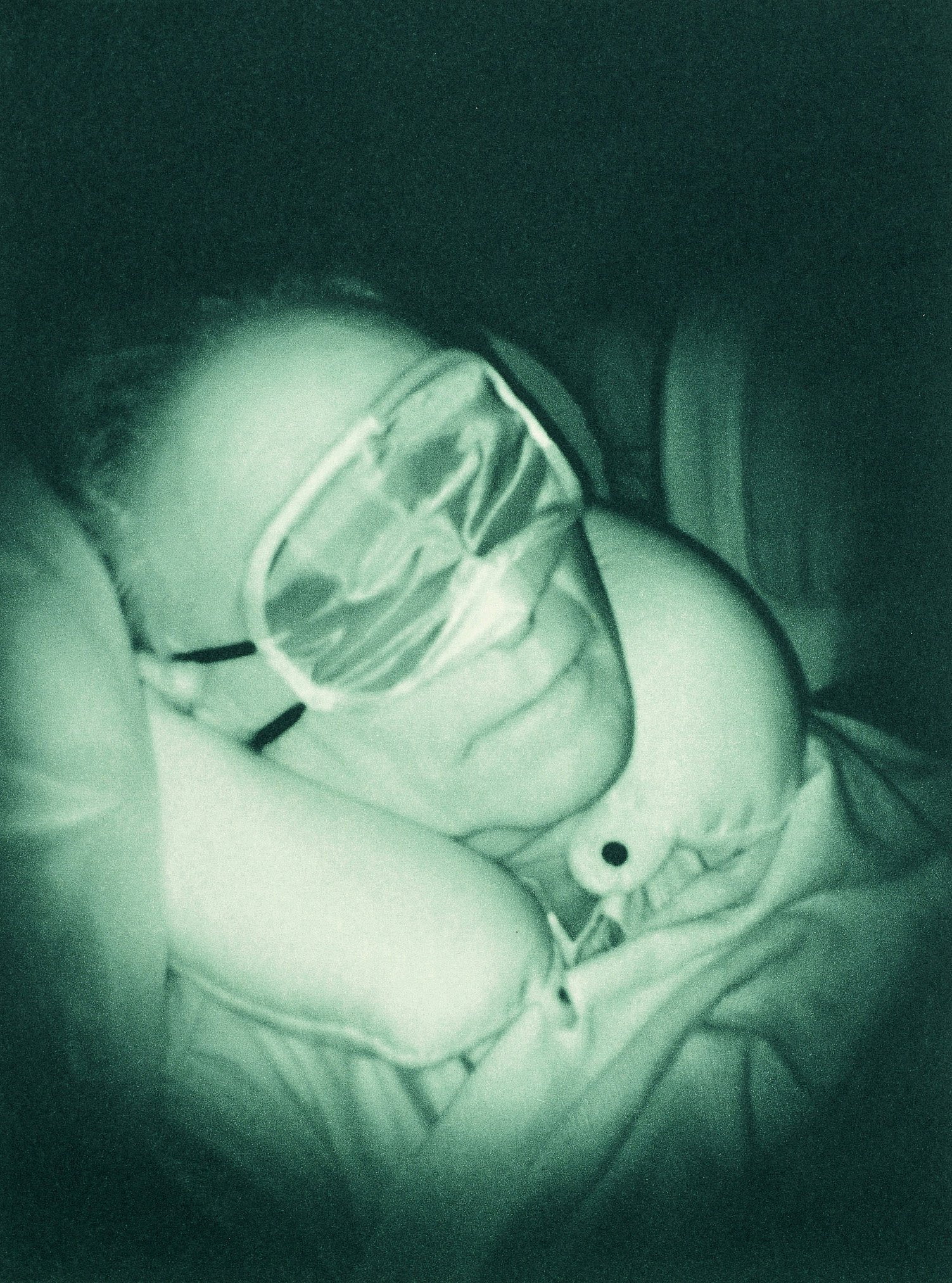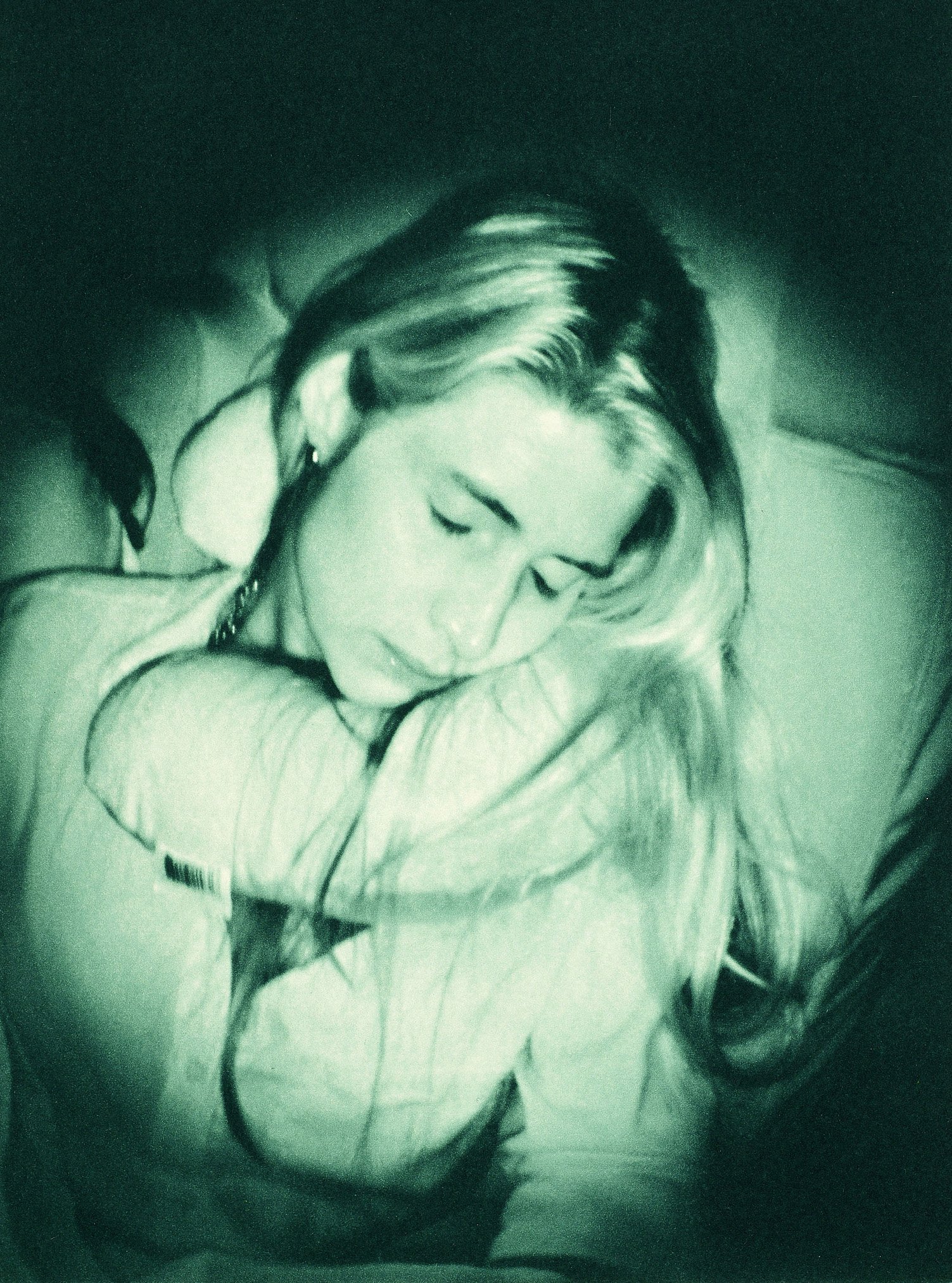
Pieter Hugo
Pieter Hugo, self-portrait with hangover, Cape Town, 2022, piezography carbon pigment print, 23 x 18.5 inches
Camilla Boemio speaks with photographer Pieter Hugo about Polyphonic, his recent exhibition surveying twenty years of groundbreaking portraiture at STEVENSON in Johannesburg.
Pieter Hugo is a photographer living in Cape Town, Johannesburg. Major solo exhibitions have taken place at Rencontres d'Arles; Museu Coleção Berardo; the Kunstmuseum Wolfsburg; the Hague Museum of Photography; Musée de l'Elysée in Lausanne; Ludwig Museum in Budapest; Fotografiska in Stockholm; MAXXI in Rome and the Institute of Modern Art Brisbane, among others.
I want to start our conversation by learning what you consider the most significant source of inspiration for your Polyphonic exhibition.
I mainly work in portraiture, and while looking over the breadth of my work, it became evident that the specific tradition of the head and shoulder portrait recurred throughout my practice, present to various degrees in almost every series. We started placing them next to each other, and the idea emerged of a survey show focusing on this form of portraiture. This perspective eliminates the context and, to an extent, the narrative of the images, focusing on the relationship between myself and the sitter, that moment of exchange.
Regina Kambule, Johannesburg, 2003, archival pigment print, 22 x 18 inches
Michael de Klerk, 2011, archival pigment print, 22 x 18 inches
Polyphonic (installation view), STEVENSON, Johannesburg, December 3, 2022 — February 4, 2023
How did you go about selecting specific works for the exhibition?
Instead of grouping the pieces by series or year, the curation focused on mood, scale, and color. By interspersing the photographs fluidly, I found that a democracy of gaze emerged, opening up the space for viewers to make their own considerations. Polyphonic resumes and expands the lines of inquiry that informed Being Present, the survey exhibition at the Rencontres d’Arles photography festival in 2021. There, the photographs were selected for how they dabbled with the language of forensics, surveillance, and typologies.
In Polyphonic, I have expanded these criteria to include technology’s role in determining what can be photographed and what is visible through the lens that escapes the naked eye. In other words, I wanted to bring attention to the ever-expanding possibilities of creating images. I was also interested in the tensions between difference and similarity, individuation and collectivity, and the private and the performative. The photos selected respond to these open-ended questions; they touch on my interests and concerns through the years.
Polyphonic (installation view), STEVENSON, Johannesburg, December 3, 2022 — February 4, 2023
Can you share some of your artistic influences for this exhibition?
Literary and painterly references inform my work in ways that are not always self-conscious. Some references to art history are easy enough to spot. In other instances, I am the first to be surprised by connections to books or paintings that have infiltrated the photographs. I had Umberto Eco’s The Infinity of Lists in the back of my mind while working on the show, especially this passage:
“The list becomes a way of reshuffling the world… they accumulate properties in order to bring out new relationships between distant things, and in any case to cast doubt on those accepted by common sense.”
What do you need to create your work?
Confronting myself with different realities has played an essential role in how I question and engage with the world. My work is about the experience of being an outsider: I inhabit this space myself and embrace this awareness as a way to engage with the people and situations I photograph. Being in unfamiliar places and situations fuels and nourishes my creativity.
Did you have any surprising new insights into your work while working on Polyphonic?
Well, putting together this ‘mini-survey’ has been educational. It’s interesting to see a clear voice of authorship running through my work, regardless of the series. I was surprised by the clarity of my portraits when edited together like this.
The Journey, 2014, photogravure, portfolio of 48 prints, 15.5 x 11 inches each
Do you think it is important to interact and communicate verbally with your photographic subjects before shooting? Do you ever return to subjects whose portraits you took in the past to take another one?
Whether I work with people that I have never met before or with members of my family and circle of friends, I almost always work by announcing myself at the outset. The images are negotiated/given as opposed to taken. The exception in this show is the series The Journey, whose sitters were photographed while asleep on a plane, using an infrared function on the camera. I did this deliberately to comment on the ubiquitous visual control we are all subject to; hence, the people photographed do not know about the images.
I have photographed my children and wife several times throughout the years. Their photographs are even more a collaboration than with other sitters: we look at ideas together and discuss the results with me; some have been published, and others are in my archive.
Mziyanda, Cape Town, 2021, archival pigment print, 44 x 34 inches
Glow, Johannesburg, 2021, archival pigment print, 44 x 34 inches
The exhibition also has three self-portraits, made at different times in your life.
Once in a while, it’s good to check in with yourself. Self-portraits (made over many years) can be humbling. They remind you of the inevitability of death.
Your most recent body of work brings together portraits of a new generation of gender-fluid models from around the globe. It’s a political message to change mentalities. How can photography have a political meaning? To what extent your work represents and reflects present times?
The series was prompted by a fashion shoot I worked on in NY; I found that the casting photos of the kids were much better than the ones after hair and make-up. There was a clarity in the difference, a kind of taxonomy and a new emerging physical aesthetic. Everyone can relate to not fitting in, not belonging. I connected to their seeming strangeness, and I’d been working in fashion for a while—I felt it was a good time to do a project that acknowledged my presence and had a more critical view of it. A portrait of a generation emerged, of a community with differences and similarities across continents.
My practice reflects my position and trajectory. I did not have a political agenda in mind. Every form of creative photography reflects the times, as it does not happen in a vacuum. This does not mean I have absolute faith in its ability to challenge or change any status quo. We might have become too desensitized in the face of images.
Pieter Hugo
Polyphonic
STEVENSON
Johannesburg
December 3, 2022 — February 4, 2023
Pieter Hugo has participated in numerous group exhibitions at institutions including the Perez Art Museum in Miami, the National Museum of Modern and Contemporary Art in Seoul, the Barbican Art Gallery, Tate Modern, the Folkwang Museum, Fundação Calouste Gulbenkian, and Bienal de São Paulo.
His work is represented in prominent public and private collections. Among them are Centre Pompidou, Rijksmuseum, the Museum of Modern Art, V&A Museum, San Francisco Museum of Modern Art, Metropolitan Museum of Modern Art, J Paul Getty Museum, Walther Collection, Deutsche Börse Group, Folkwang Museum, and Huis Marseille. In 2015, he was shortlisted for the Prix Pictet and was chosen as the ‘In Focus’ artist for the Taylor Wessing Photographic Portrait Prize at the National Portrait Gallery in London.
Camilla Boemio is an internationally published author, curator, and member of the AICA (International Arts Critics) based in Rome. In 2013, Boemio was the co-associate curator of PORTABLE NATION: Disappearance as work in Progress – Approaches to Ecological Romanticism, the Maldives Pavilion at the 55th International art exhibition La Biennale di Venezia. In 2016, Boemio curated Diminished Capacity, the First Nigerian Pavilion at the Venice Architecture Biennale. Boemio’s recent curatorial projects include her role as co-associate curator at Pera + Flora + Fauna. The Story of Indigenousness and The Ownership of History, an official collateral event at the 59th International art exhibition La Biennale di Venezia, 2022. Invitations to speak include the Tate Liverpool, MUSE Science Museum, and the Cambridge Festival 2021, at Crassh, in the UK.









